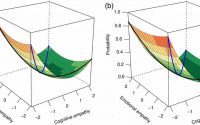AI: A data scientist explains how deep and shallow learning can work together to create cost savings
For all the hype and excited pronouncements about the impacts it can have driving healthcare efficiencies, artificial intelligence is still not deployed as widely (or wisely) as it could be.
But many health systems are working in earnest to roll out AI-driven analytics projects – even if their particular payoff isn't quite yet in sight – with the understanding that the technology is evolving at a dizzying pace, and big improvements could be just around the corner.
That's the case at Partners for Kids, an accountable care organization affiliated with Nationwide Children's Hospital in Columbus, Ohio. As one of the largest pediatric ACOs in the country, PFK has a big opportunity to enable big savings by bettering the health of its Medicaid patients.
Simon Lin, chief research information officer at Nationwide Children's Hospital, is excited about the potential for AI and machine learning for better population health outcomes. He's seen what they're already doing in other sectors of the economy and wants to take deep dive into their healthcare applications – a deep one, but a shallow one too.
At the HIMSS Big Data and Healthcare Analytics Forum in San Francisco on June 14, Lin will present a discussion on "The Promise of Shallow and Deep Learning in ACOs."
You've heard of deep learning, perhaps. But shallow learning – which can gain similarly useful insights from smaller data sets with less heavy lifting – is a valuable complement to it when developing predictive analytics projects, said Lin.
PFK cares for 330,000 in nearly three dozen counties in central and southeastern Ohio. More than 1,000 physicians participate in the ACO. But the high dimensionality of coding data can make the all those patients seem to be "sparse and dissimilar," he said, which can hinder the development of sound strategies for predictive modeling.
So for the past six months or so, Lin and a team of seven data scientists at Nationwide Children's Hospital have been developing a "shallow learning network" to help address that problem.
"We have just started," he said. "We've played with it for about half a year. We started with a Ph.D. student in computer science interested in AI and deep learning, and I challenged him with problems in healthcare. We've things moving pretty fast in just the past six months. We are looking to apply this to several things, and they're all related to risk prediction in the context of accountable care."
First, PFK wants to examine cost prediction, said Lin. "Given the patient's past history, and their medical claims, are you able to predict the cost for the next year?"
"We are comfortable doing shallow learning. But when we are really doing deep learning, we hope, the data points will be 10 to 100 times larger."
Simon Lin, HIMSS’ Nationwide Children’s Hospital
The ACO is also interested in predicting utilization, he said: "predicting hospitalization, emergency room use, or predicting high-cost patients versus low-cost patients – predicting the risk for the populations we are managing."
So what are deep learning and shallow learning, exactly, and how can they work in tandem? Which data sources work best for deep and which are best for shallow?
"Both deep learning and shallow learning are a kind of a neural network," said Lin. "Deep learning has more layers, which require a larger amount of data. Shallow learning has fewer layers – so those are some of the technical tricks we play to make artificial intelligence work. We are still in the process of experimenting with both."
As of now, "our current understanding is that for shallow learning we can deal with a smaller amount of data – relatively small, but still large," he said. "In this case we are letting the computer learn from 2 million claims from 100,000 people in the past two years. That's a relatively small amount of data.
"We are comfortable doing shallow learning," he said. "But when we are really doing deep learning, we hope, the data points will be 10 to 100 times larger."
As for tangible gains so far – better patient outcomes, financial improvements – he emphasized that it's still early in the game. "But early indications of the predictions are that it's doing better than the traditional model, the evaluations of the so-called area under the curve is doing better. But we have not applied and shown the real financial benefit yet. That will be the next step."
So far, Lin said a big key to doing both types of machine learning right is to ensure an organization has the right people working on the data projects, and a collaborative and cooperative team. That can be easier said than done.
On the other hand, "the technology part is, relatively speaking, easier," he said. "But by no means is it easy. You have to deal with all those emerging technologies, like TensorFlow. And also in terms of computing, it's GPUs – it's no longer using CPUs, but GPUs for this kind of computing."
For those reasons, at least for the moment, it's going to be well-resourced healthcare systems such as Nationwide Children's Hospital who will be best able to make inroads on AI initiatives like this one, said Lin – health systems who are "on the leading edge of innovation who can try this."
That said, "my prediction is that 18 to 24 months from now, there will be startups and commercial products that start showing up, and adoption will be much higher" among smaller hospitals and health systems, he said.
"Just think about self-driving cars," Lin explained. "Five years ago we would never think about it. Now they're on the road. Just think how fast it's moving in the AI world. It's amazingly fast."
Twitter: @MikeMiliardHITN
Email the writer: [email protected]
Source: Read Full Article



